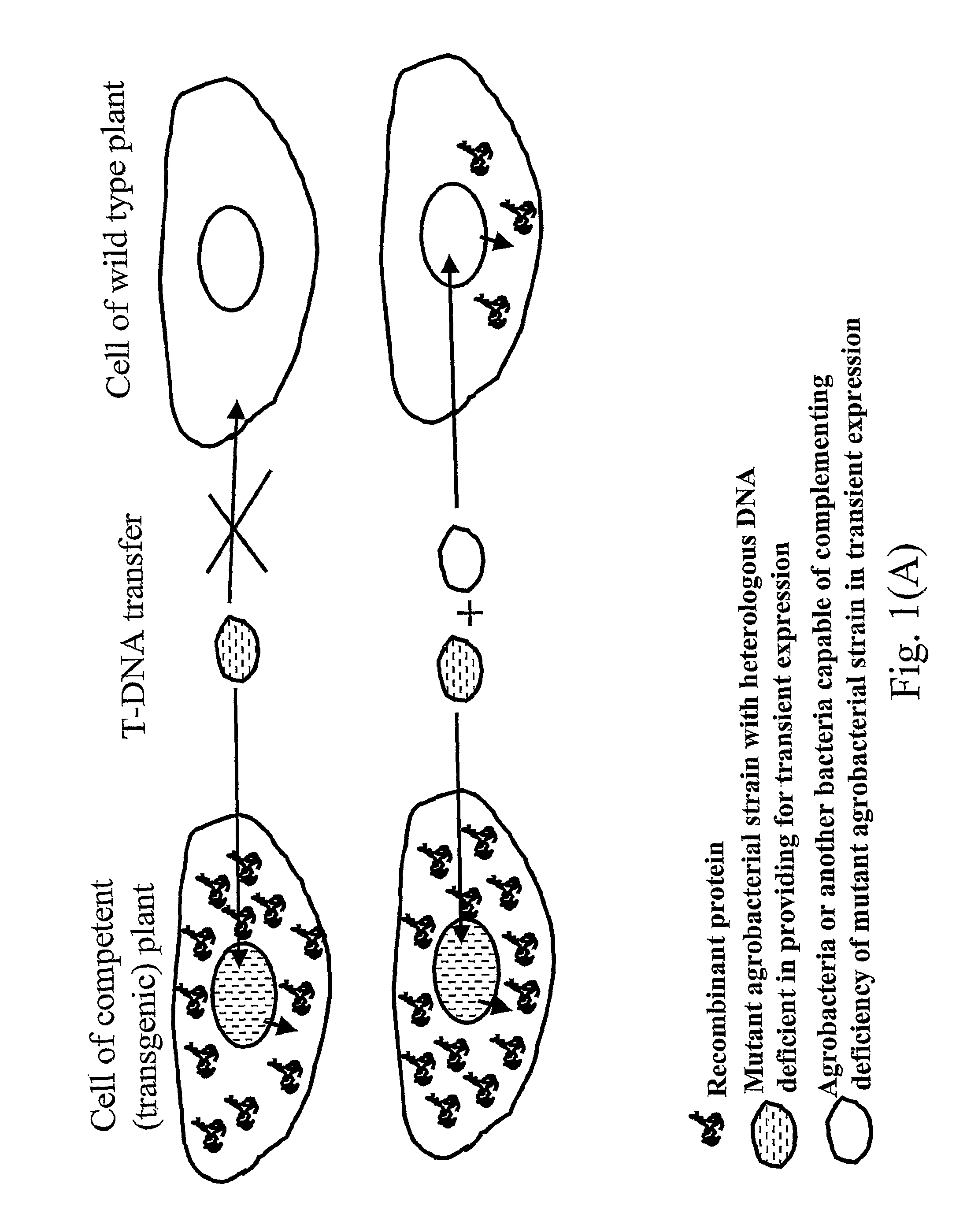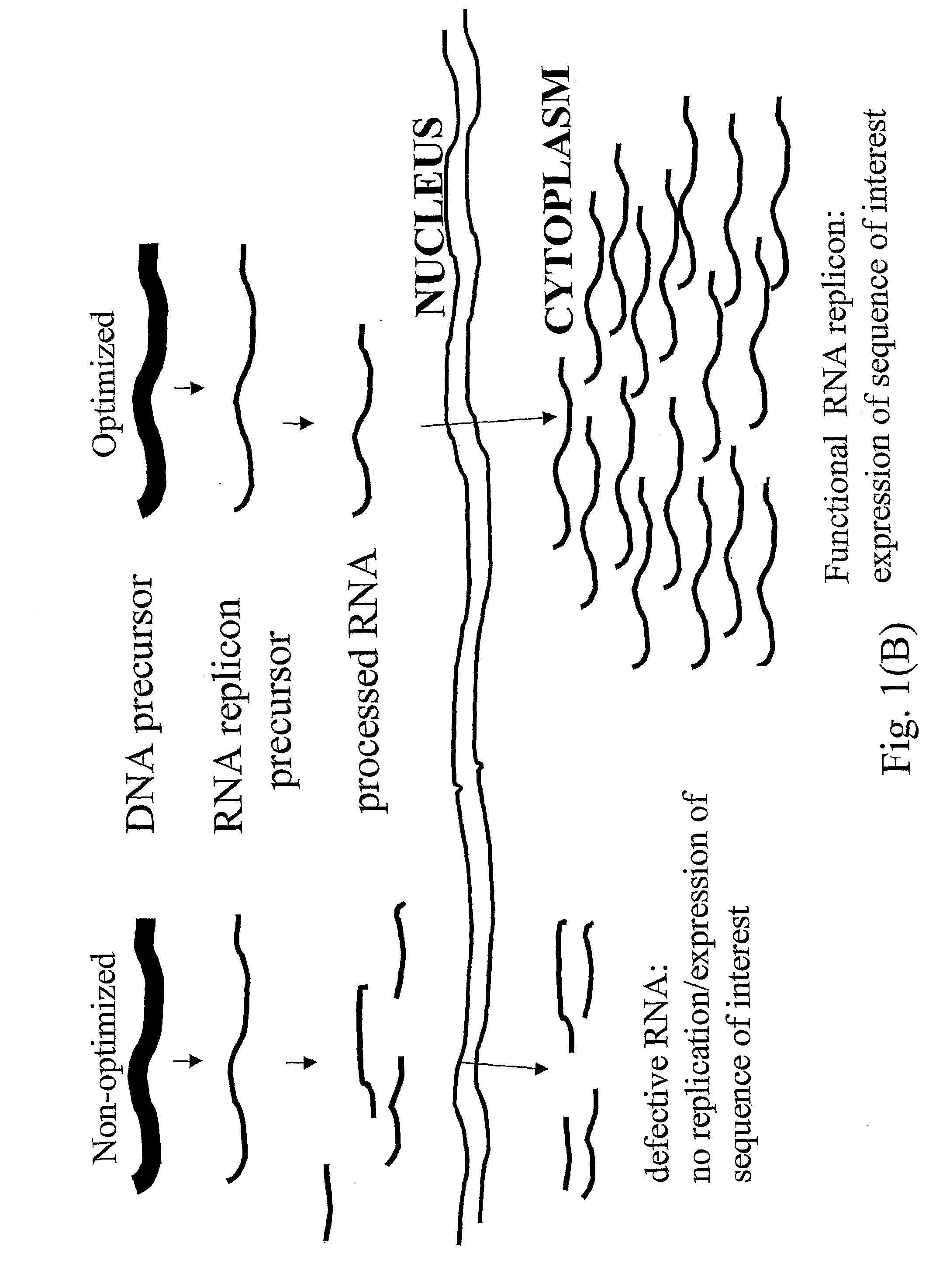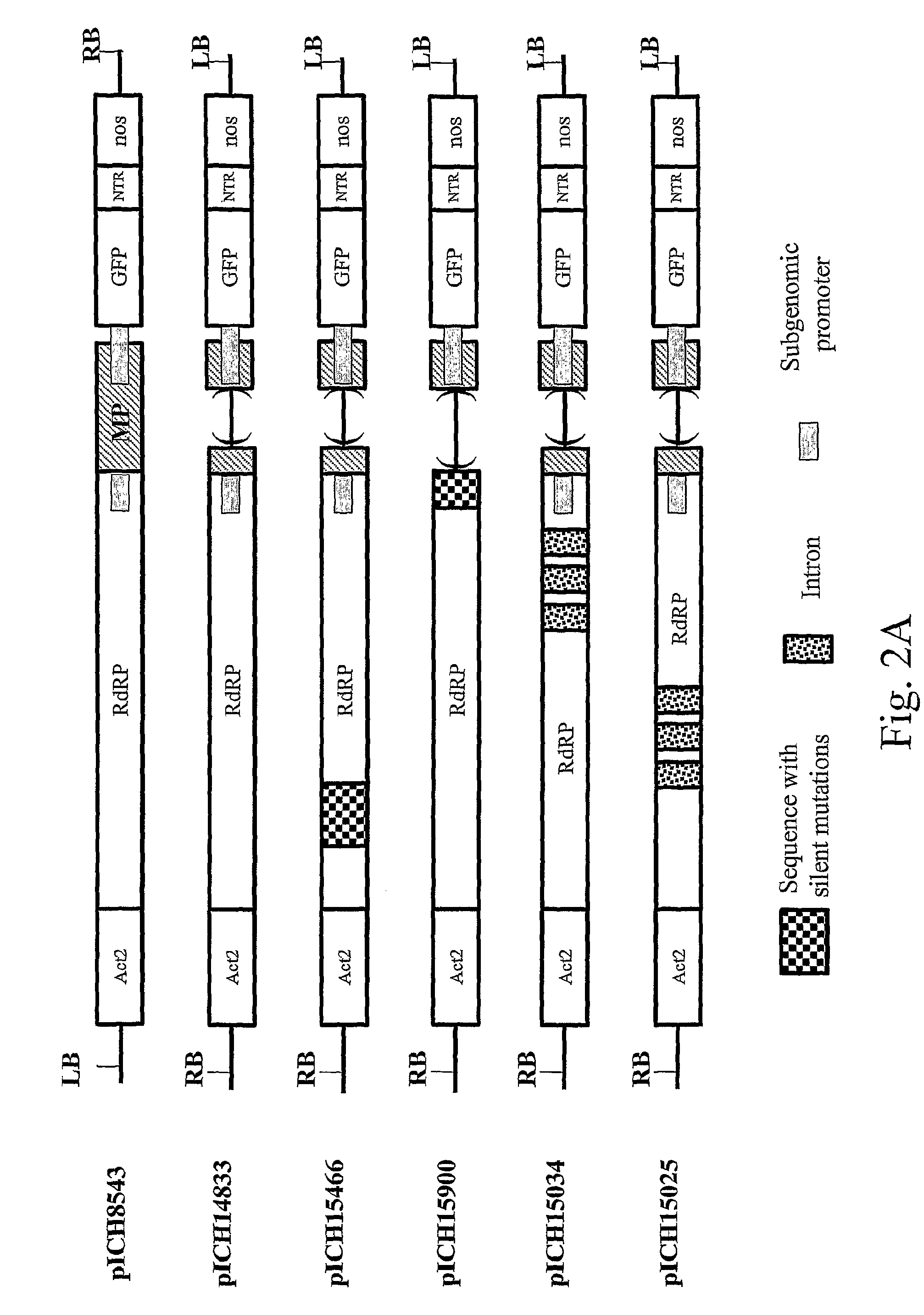Biologically safe transient protein expression in plants
a transient protein and plant technology, applied in the field of biologically safe transient protein expression in plants, to achieve the effect of high biological safety
- Summary
- Abstract
- Description
- Claims
- Application Information
AI Technical Summary
Benefits of technology
Problems solved by technology
Method used
Image
Examples
example 1
Construction of a TMV-Based RNA Vector
[0157]Cloned cDNAs of the crucifer-infecting tobamovirus (cr-TMV; Dorokhov et al., 1994, FEBS Lett. 350, 5-8) and of the turnip vein-clearing virus (TVCV; Lartey et al., 1994, Arch. Virol. 138, 287-298) were obtained from Prof. Atabekov from Moscow University, Russia. A viral vector containing a green fluorescence protein (GFP) gene was made in several cloning steps. The resulting construct, pICH8543 (FIG. 2A), contains in sequential order: a 787 bp fragment from the Arabidopsis actin 2 promoter (ACT2, ref An et al, 1996, GenBank accession AB026654, bp 57962 to 58748), the 5′ end of TVCV (GenBank accession BRU03387, bp 1 to 5455), a fragment of cr-TMV (GenBank accession Z29370, bp 5457 to 5677, with thymine 5606 changed to cytosine to remove the start codon of the coat protein, CP), sequences “taa tcg ata act cga g”, a synthetic GFP (sGFP) gene, cr-TMV 3′ nontranslated region (3′ NTR; GenBank accession Z29370, bp 6078 to 6312), and finally the n...
example 2
Construction of an Improved TMV-Based RNA Vector
[0163]To improve the speed at which the sequence of interest is expressed in infiltrated leaves, 16 arabidopsis introns, ranging in size from 91 to 443 nt, were added to the vector at positions 1 to 16: (position given relative to in TVCV sequence, GenBank accession BRU03387): 1, bp 209; 2, bp 423; 3, bp 828; 4, bp 1169; 5, bp 1378; 6, bp 1622; 7, bp 1844; 8, bp 2228; 9, bp 2589; 10, bp 2944; 11, bp 3143; 12, bp 3381; 13, bp 3672; 14, bp 3850; 15, bp 4299; 16, bp 4497; 17, bp 5099; 18, bp 5287; 19, bp 5444. The resulting construct, pICH18711 (FIG. 2C), was used for vacuum-infiltration of several Nicotiana benthamiana plants of different ages (17 to 35 days after sowing). GFP fluorescence appeared after two days and was very high at 6 days post infiltration. A picture is shown at 4 days after infiltration (FIG. 4). GFP fluorescence covered the entire leaf area much faster (4 to 6 days after infiltration) than with the non-improved vecto...
example 3
Expression of Pharmaceutical Proteins Using Vacuum Infiltration of Viral Vectors Delivered by Agrobacterium
[0165]Two proteins of pharmaceutical interest were cloned instead of GFP in the improved vector described above. Cloning of the first protein, the human growth hormone (hGH) (sequence Genbank accession NM—000515), resulted in vector pICH17991 (FIG. 2C). Cloning of the second protein, the human interferon alpha (sequence Genbank accession V00548), resulted in vector pICH19081 (FIG. 2C). In this construct, the first 17 amino acids (LLVALLVLSCKSSCSVG) of interferon were replaced by the Arabidopsis calreticulin apoplast targeting sequence (matqrranpsslhlitvfsllvavvsaev). Constructs were inserted into agrobacterium strain GV3101 and used for whole plant infiltration. For both proteins, a high level of protein expression was obtained. For pICH17991, a high level of expression of hGH of 1 mg / g of infiltrated leaf tissue was obtained even though toxicity of the protein led to cell dea...
PUM
| Property | Measurement | Unit |
|---|---|---|
| optical density | aaaaa | aaaaa |
| optical density | aaaaa | aaaaa |
| optical density | aaaaa | aaaaa |
Abstract
Description
Claims
Application Information
 Login to View More
Login to View More - R&D
- Intellectual Property
- Life Sciences
- Materials
- Tech Scout
- Unparalleled Data Quality
- Higher Quality Content
- 60% Fewer Hallucinations
Browse by: Latest US Patents, China's latest patents, Technical Efficacy Thesaurus, Application Domain, Technology Topic, Popular Technical Reports.
© 2025 PatSnap. All rights reserved.Legal|Privacy policy|Modern Slavery Act Transparency Statement|Sitemap|About US| Contact US: help@patsnap.com



